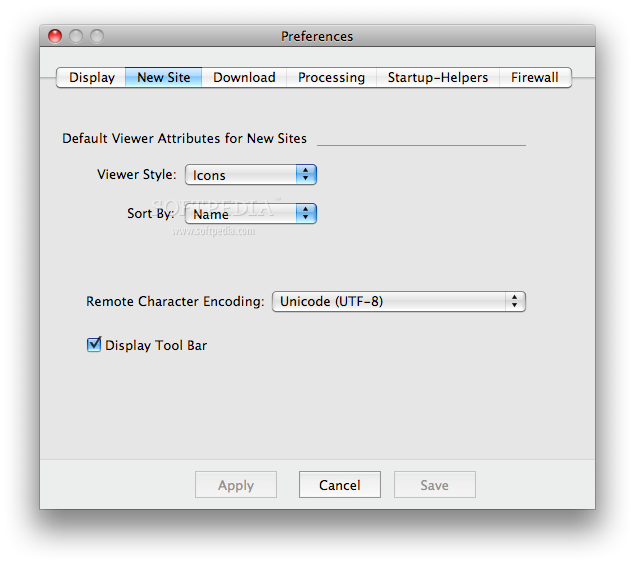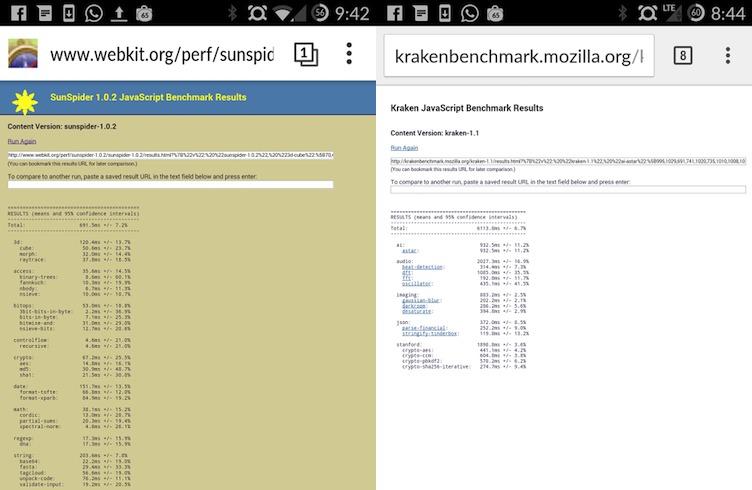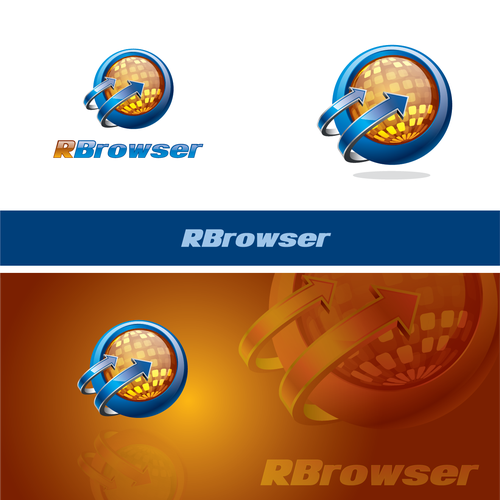RBrowser 4.6.8.2 for Mac can be downloaded from our website for free. This app's bundle is identified as com.objectwarehouse.rbrowser4. RBrowser.SL.4.6.4.7.dmg is the most frequent filename for this application's installer. This Mac app is a product of RBrowser.com. The most popular version among the application users is 4.6.
- Tor Browser enables you to use Tor on Windows, Mac OS X, or Linux without needing to install any software. Tor is a software that bounces your communications around a.
- Rbrowser is an Android Productivity app that is developed by samfisher83 and published on Google play store on NA. It has already got around 10000 so far with an average rating of 4.0 out of 5 in play store.
World history is rife with epic power struggles, world-conquering tyrants, and heroic underdogs. The history of web browsers isn’t very different. University pioneers wrote simple software that sparked an information revolution, and battle for browser superiority and internet users.
Before Web Era
In 1950, computers took up whole rooms and were dumber than today’s pocket calculators. But progress was swift, and by 1960 they were able to run complex programs. Governments and universities across the globe thought it would be great if the machines could talk, nurturing collaboration and scientific breakthroughs.
ARPANET was the first successful networking project and in 1969 the first message was sent from the computer science lab at University of California, Los Angeles (UCLA) to Stanford Research Institute (SRI), also in California.
Browsers For Mac
That sparked a revolution in computer networking. New networks formed, connecting universities and research centers across the globe. But for the next 20 years, the internet wasn’t accessible to the public. It was restricted to university and government researchers, students, and private corporations. There were dozens of programs that could trade information over telephone lines, but none of them were easy to use. The real open internet, and the first web browser, wasn’t created until 1990.
Web Era
British computer scientist Tim Berners-Lee created the first web server and graphical web browser in 1990 while working at CERN, the European Organization for Nuclear Research, in Switzerland. He called his new window into the internet “WorldWideWeb.” It was an easy-to-use graphical interface created for the NeXT computer. For the first time, text documents were linked together over a public network—the web as we know it.
A year later, Berners-Lee asked CERN math student Nicola Pellow to write the Line Mode Browser, a program for basic computer terminals.
By 1993, the web exploded. Universities, governments, and private corporations all saw opportunity in the open internet. Everyone needed new computer programs to access it. That year, Mosaic was created at the National Center for Supercomputing Applications (NCSA) at the University of Illinois Urbana-Champaign by computer scientist Marc Andreessen. It was the very first popular web browser and the early ancestor of Mozilla Firefox.
NCSA Mosaic ran on Windows computers, was easy to use, and gave anyone with a PC access to early web pages, chat rooms, and image libraries. The next year (1994), Andreessen founded Netscape and released Netscape Navigator to the public. It was wildly successful, and the first browser for the people. It was also the first move in a new kind of war for internet users.
The Browser Wars
By 1995, Netscape Navigator wasn’t the only way to get online. Computer software giant Microsoft licensed the old Mosaic code and built its own window to the web, Internet Explorer. The release sparked a war. Netscape and Microsoft worked feverishly to make new versions of their programs, each attempting to outdo the other with faster, better products.
Netscape created and released JavaScript, which gave websites powerful computing capabilities they never had before. (They also made the infamous <blink> tag.) Microsoft countered with Cascading Style Sheets (CSS), which became the standard for web page design.


Things got a little out of hand in 1997 when Microsoft released Internet Explorer 4.0. The team built a giant letter “e” and snuck it on the lawn of Netscape headquarters. The Netscape team promptly knocked the giant “e” over and put their own Mozilla dinosaur mascot on top of it.
Then Microsoft began shipping Internet Explorer with their Windows operating system. Within 4 years, it had 75% of the market and by 1999 it had 99% of the market. The company faced antitrust litigation over the move, and Netscape decided to open source its codebase and created the not-for-profit Mozilla, which went on to create and release Firefox in 2002. Realizing that having a browser monopoly wasn’t in the best interests of users and the open web, Firefox was created to provide choice for web users. By 2010, Mozilla Firefox and others had reduced Internet Explorer’s market share to 50%.
Other competitors emerged during the late ‘90s and early 2000s, including Opera, Safari, and Google Chrome. Microsoft Edge replaced Internet Explorer with the release of Windows 10 in 2015.
Browsing the Web Today
Today there are just a handful of ways to access the internet. Firefox, Google Chrome, Microsoft Edge, Safari and Opera are the main competitors. Mobile devices have emerged during the past decade as the preferred way to access the internet. Today, most internet users only use mobile browsers and applications to get online. Mobile versions of the major browsers are available for iOS and Android devices. While these apps are very useful for specific purposes, they only provide limited access to the web.
In the future, the web will likely stray further from its hypertext roots to become a vast sea of interactive experiences. Virtual reality has been on the horizon for decades (at least since the release of Lawnmower Man in 1992 and the Nintendo Virtual Boy in 1995), but the web may finally bring it to the masses. Firefox now has support for WebVR and A-Frame, which let developers quickly and easily build virtual reality websites. Most modern mobile devices support WebVR, and can easily be used as headsets with simple cardboard cases. A 3D virtual reality web like the one imagined by science fiction author Neal Stephenson may be just around the corner. If that’s the case, the web browser itself may completely disappear and become a true window into another world.
Whatever the future of the web holds, Mozilla and Firefox will be there for users, ensuring that they have powerful tools to experience the web and all it has to offer. The web is for everyone, and everyone should have control of their online experience. That’s why we give Firefox tools to protect user privacy and we never sell user data to advertisers.
Resources
© Copyright Robert Vasvari, 1993-2018.
Troubleshooting, known errors, problems
Since RBrowser does not use any custom software on the remoteend, it has to rely on various implementations of UNIX utilitiesand FTP servers. Some remote systems you connect to might nohave correct implementations of all the software RBrowserrelies on. This can cause errors in some operations. Thisdocument is my attempt to record all the various problems,weirdnesses etc.

If you decide to send us an error report, pleaseTURN ON 'Show Debug Log' under the Tools Menu and and observe the Report SubmissionGuidelines so we can help you better in diagnosing the problem.Your cooperation is much appreciated!
Slow Startup or Licensing Problems:
If RBrowser is very slow to start up, that can have some common reasons. If you experience that problem, please read the following carefully and try to determine which one applies in your case by process of elimination.
- The license daemon: If you are a licensed user of RBrowser, every time you start the app, RBrowser will connect to a license daemon to check if you are authorized to run the app with all features. If necessary, RBrowser will start an RBDaemon process in the background. Due to a system bug that is under investigation by Apple, on some systems this license daemon is unable to startup, and spawns multiple processes of itself. In this case RBrowser takes several minutes to start up, and then it will not recognize the license even though it was entered properly previously. If this happens the workaround we can do is to convert your license to hostbound one, in which case the license daemon will not be started. Please click 'local only' so the app will run, then click the Help/Licenses menu. The License Panel shows the hostid, something similar to 0x001d4f487614. Please copy this hostid, then send us along with your original license. We will convert your license and send it back to you.
- The preferences file: It does happen sometimes that the Preferences (which tend to hold a lot of information about window positions and such...) become corrupted. As a result, RBrowser can have an slow Startup and very erratic behaviour, even crash, due to bad data being read from the preference file. The thing to try is to simply remove this file and restart the program. The system Preferences file for RBrowser is: YOURHOME/Library/Preferences/com.rbrowser.rbrowser4.plist. Remove or just rename it and restart the program to see if that improves things...
The Local Viewer:
The Sharity/afp/smb Problem: Sharity andother automount systems usually park symbolic links into /Network/xxx (like /Network/CIFS)fortheir connections. When any of these links are touched, ittriggers the process to actually mount the remote file system.Since RBrowser scans local directories, it accidentally set offall defined mounts in /Network/CIFS. The workaroundis this: There is a preference called'RBNoScanLocalDirs'; it is an array (alist of directories), which currently defaults to /Network/CIFS,/Network/Servers,/Net and /afs. RBrowser will not scan a directory that isonthis list. So, if you click on /Network/CIFS in theviewer you will get an empty directory. This way, the Sharitymounts will not be set off just from the directory scan. You canstill access the mounted directories in RBrowser by using the'Go/Go To Folder' menu option or by directly clickinginto them by the viewer. Let's say there is a mounted CIFS hostcalled 'pepper' under which there is a 'foo'directory. Bring up the go to Folder Panel and type:'/Network/CIFS/pepper/foo' and hit'Load.' RBrowser will load the directory if exists.This should trigger the mount of 'pepper' ONLY. The /Network/CIFS/ will not be scanned, it will show asingle entry 'pepper.' You can safely put foo on the shelf, so you can easily find it later.
If you want to change this default to a different directoryorturn it off altogether, use the command line interface in theTerminal App:
To turn this feature off (so /Network/CIFS will be treated likeany other directory):
prompt>defaults write com.objectwarehouse.rbrowser4RBNoScanLocalDirs '( )' <ENTER>
To change to another set of directories:
prompt>defaults write com.objectwarehouse.rbrowser4RBNoScanLocalDirs '(/dir/foo,/dir2/foo1 )' <ENTER>
FTP problems and issues are discussed in the Using FTP Page.
SFTP protocol:
More potential problems describedin the SSH Issues Page.
Empty Folders after SFTP login:
RBrowser does much more than other SFTP programs, it uses an ssh shell by default which has a lot more capabilities than a regular sftp connection other programs use. If the ssh login does not work, RBrowser automatically switches the a regular SFTP connection. It is rare, but does happen sometimes, that the ssh login does succeed, but the connection is still unworkable, folders are not listed, etc... This is usually caused by non-standard behaviour of the remote host, especially in the case of virtual unix hosts which are not real machines, only VPS software. If you have such problems with the default (ssh shell) connection, like empty folders and such there are two possible approaches:
- Diagnose the problem: You can make RBrowser write a very verbose log to aid in debugging any problems. There is a Global Preference called 'Show debug log'. A verbose transcript will be written into the console log. This can be viewed by starting up the Console App (in /Applications/Utilities folder). This option is global, so it will apply to all connections. BE SURE TO TURN THIS OFF WHEN THE PROBLEM IS SOLVED as this option uses a lot of system resources.
- Turn off shell access and default to a simple sftp connection: In this case RBrowser will act like any other SFTP client, but for most applications this will still work OK. Type 'COMMAND N' or click the Go/New Site menu. That will bring up the login panel. Under the 'Site List' pulldown find the site in question. If it is not there, then enter the hostname, username and password for this site. Set the protocol to SFTP. Click 'Site Preferences'. This will create a preferences file for this site before login and bring up the Site Preferences Panel. Click the Limits tab, and set SSH Mode options to 'SFTP Only'. Click Save to dismiss the panel and click 'Connect' on the login panel. You should now have a standard SFTP connection.
No Shell Access:
The File Viewer's Title Bar shows the protocol (how RBrowsercommunicates with the remote host), the host's nameand the user name. If the protocol is SFTP, there may be (ns)next to the protocol. That means that RBrowserwas not able to get shell access to the remote host and has fallen backto using SFTP only. Someof the more advanced features, like compressing, remote-to-remote filetransfers, and recursive file operations will not work in this mode. Ifyou connect with the transcript on, there is usuallysome error message in the transcript showing why the shell connectionfailed. For example, some olderlinux machines do not have good enough shells. These are listed below.Also,shell access may be denied completely for security reasons (this ismore common). After looking atthe error messages in the transcript, shell access may be restored byinstalling another shell,or some required shell utilities to the remote host.
Connecting:
You are trying to connect to a remote host as UNIX, you havean account, and the login still fails. You try login with FTP andit succeeds. This is most likely caused by the fact that someadministrators disable the inetd service'rexec' by commenting out the appropriate line in /etc/inetd.conf. Failing that, you may be able touse the SSH protocol to log in. If you are connecting to LINUX,please make sure you read the Linux section in this document.
Error reporting:
Some of the operations fail silently. Deleting files is mostprone to this. This is true in all of the protocols. For thatreason, folders that are potentially changed with the operationare always reloaded after the operation. One common inducementfor a silent failure is replacing a folder by dropping into itsparent another folder with the same name. If some of the contentsof the original folder are not writable, the whole operation will(silently on some systems) fail. In this case, always checkpermissions!
Remote-to-Remote Transfer Gotchas:
Direct Remote-to-Remote File Transfers work very nicely inRBrowser, as long as you observe some very simple rules:
1. The source machine must be able to resolve the targetmachine's name. If you are transferring from HOST1 to HOST2,HOST1 must be able to resolve the name HOST2. For this reason,always login using fully qualified hostnames, such asHOST2.MYDOMAIN.COM that can always be resolved. If the sourcehost cannot resolve the target host, the transfer will just hang,and eventually time out.
2. As described above the username/password supplied at logintime will be used to initiate an scp connection from user1@HOST1to user2@HOST2. If you use special RSA keys while logging on touser2@HOST2, it is possible that those RSA keys do not workcoming from user1@HOST1. More potential problems described in the SSH Issues Page.
Available space:
There are certain situations where RBrowser will report theincorrect amount of available space on the remote host. This hasto do with the fact that, on UNIX, due to the use of symboliclinks there are many ways to reference the same directory. Forinstance, your home directory path may be /u/myhome.There is a link from /nfs/home to the samedirectory. RBrowser knows that /u is a mount point,but the shell thinks your home directory is /nfs/home/u/myhome. RBrowser has no way to knowthat /u/myhome = /nfs/home/u/myhome.Therefore, RBrowser goes back to /nfs to find outthe available space. The number it gets will be different from /u where the real mount point is. Unfortunately,there is no workaround for this, except... If you really want toknow the avail space, you can follow the alternative path(/u/myhome) in the viewer, in which case thecorrect available space will be shown.
Files are lost during copying:

On the unix server, I have: 3flags.JPG and 3FLAGS.JPG in thesame directory. WhenI copy them back to my OSX client, only one of the files shows up. Whatcan it be?Well, RBrowser works as expected in this case. If you copy those filesfrom a unix serverwhich presumably has a ufs (case sensitive) filesystem and copy thembackto an hfs filesystem on OSX, one file will overwrite the other, sincehfs is not casesensitive, only case preserving. You need to keep that in mind whennaming your files! Also, it is possible to keep a partition in your OSXbox with a ufs filesystemso that you can have the same behaviour as the server.
LINUX issues:
Brave Browser
In the SSH/UNIX protocols, RBrowser runs a Bourne (orcompatible) shell on the remote system. This shell must be reallyconsistent across multiple platforms, otherwise RBrowser cannotwork with it. RBrowser loves the Korn shell(ksh), but /bin/sh works fine too. RBrowserlooks for ksh and if is not there, it uses ash or zsh in that order. Here istheproblem: all distributions of Linux come with bash instead of sh (/bin/sh is usually a link to /bin/bash). RBrowser has a really tough time with bash because it is inconsistent. The only goodsolution to this problem is to install ksh on theLinux system. After installing ksh, blow away theconnection default file in ~/Library/ApplicationSupport/RBrowser (if exists) and reconnect. Most Linuxsystems today have ash at least, and at the time ofthis writing we have seen no problem with it.
A bit about shells: most of the shells that ship with Linuxare broken, most notably bash. RBrowser defaults touse /bin/ash when you connect to Linux systems, andyou probably want to leave that alone, as it is the mostconsistent one that ships with RedHat Linux.
Changing Group on a file:
RBrowser uses chgrp to change groups of filesonthe remote system. Please note that currently, if the file is asymbolic link, chgrp will set the group on thetarget of the link, not the link itself.
ALL protocols:
SaveBack does not work:

R Browser Cache
There could be great differences between the local andremotebox that could cause a failure in the modification checkingmechanism. Plase make sure that the clocks on your and the remotebox are not too far apart (unless they are in a differenttimezone). Use ntp (network time) wherever possible.
What to do if you are trying to do something and getthe beach ball?
Maybe the remote host you are connected to is notresponding.Try logging in using telnet or ssh from theTerminal. If the host is not responding correctly, RBrowser mayget stuck trying to talk to it. These connection attempts willtime out usually after 60 seconds. After that, everythingwill operate normally. If the attempt does not time out, you mayhave to kill RBrowser using the Processes menu from theWorkspace, and restart it.
Browser Settings
App-Document Associations:On some systems folders named xx.site or xx.com appear asfiles.. Why?
Most apps use'filepackages' as their documents. Theseare directories with an arbitrary file structure. They use a filenameextension to associate with an app. Regrettably, some apps claim verygeneric names as their documents. In these cases both in theFinder and in RBrowser they appear as files, not folders. RBrowser does not maintain app-documentfile associations, it gets them from the Finder.
The 'File/ShowPackage Contents' menu can always be used to browse into a filepackage (just like theFinder). In later versions RBrowser will have a way to be told toignore certain filename extensions. Also, in the Finder can beconfigured to ignore certain filename extensions and not treat it likeadocument of some app. Please see Apple's documentation for this.
Browser
I tried to kill a background process, but it wouldnotgo away...
Browser Games
Depending on the reliability of your network connection,somebackground processes can hang. If this happens, the only thingyou can do is to restart RBrowser.
